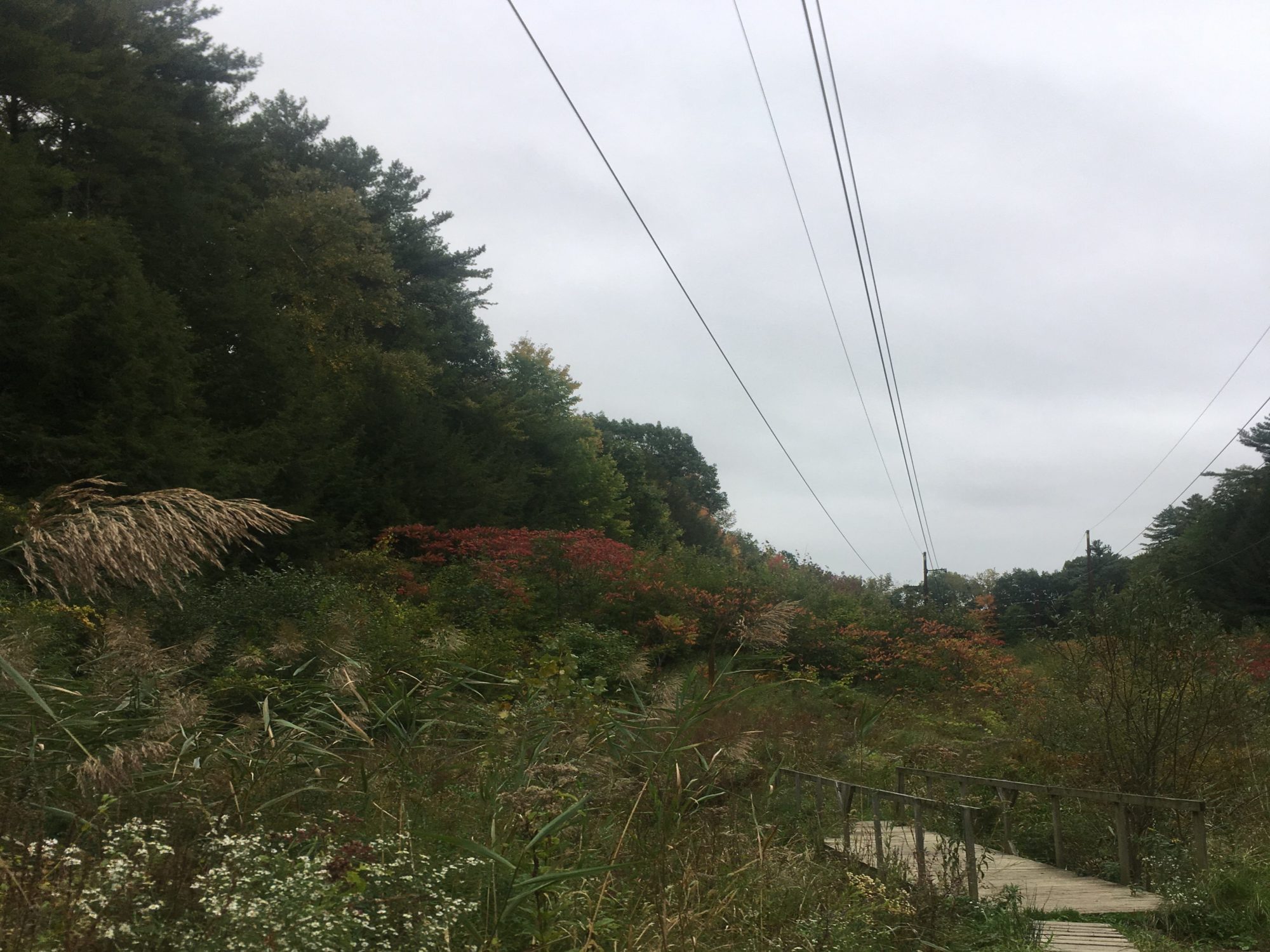I’m back in Vermont for a second semester and revisiting my phenology site after a long absence. Winding around the trail’s bend today I didn’t expect the site to look much different than it did in December, but I quickly learned I was wrong.
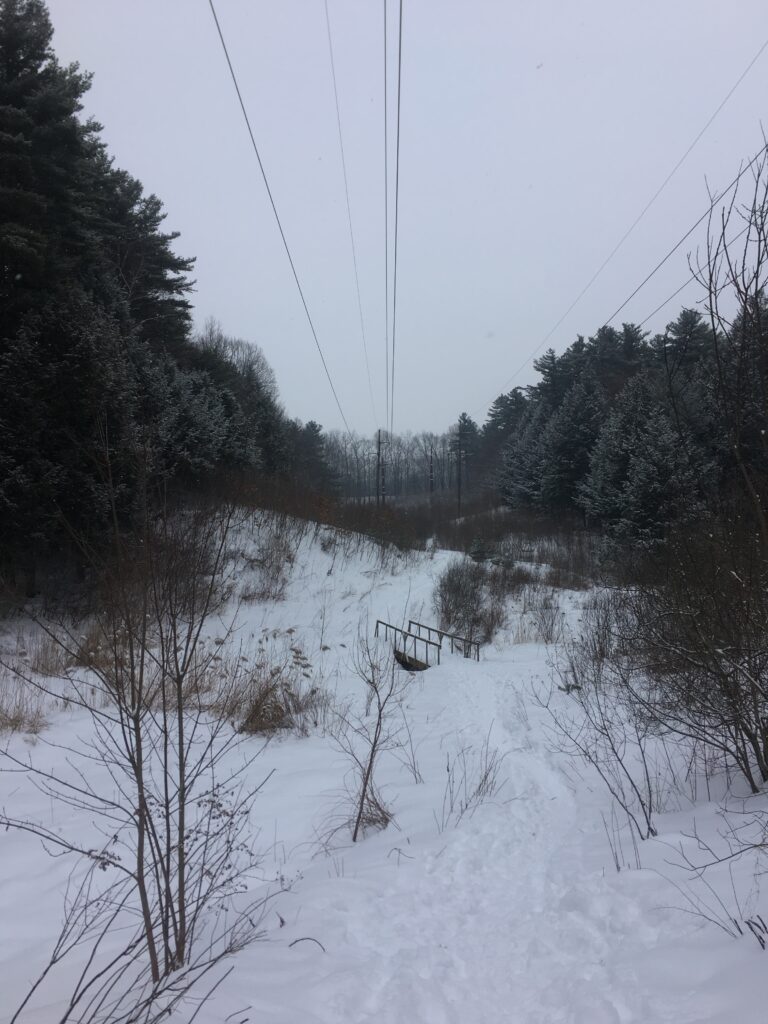
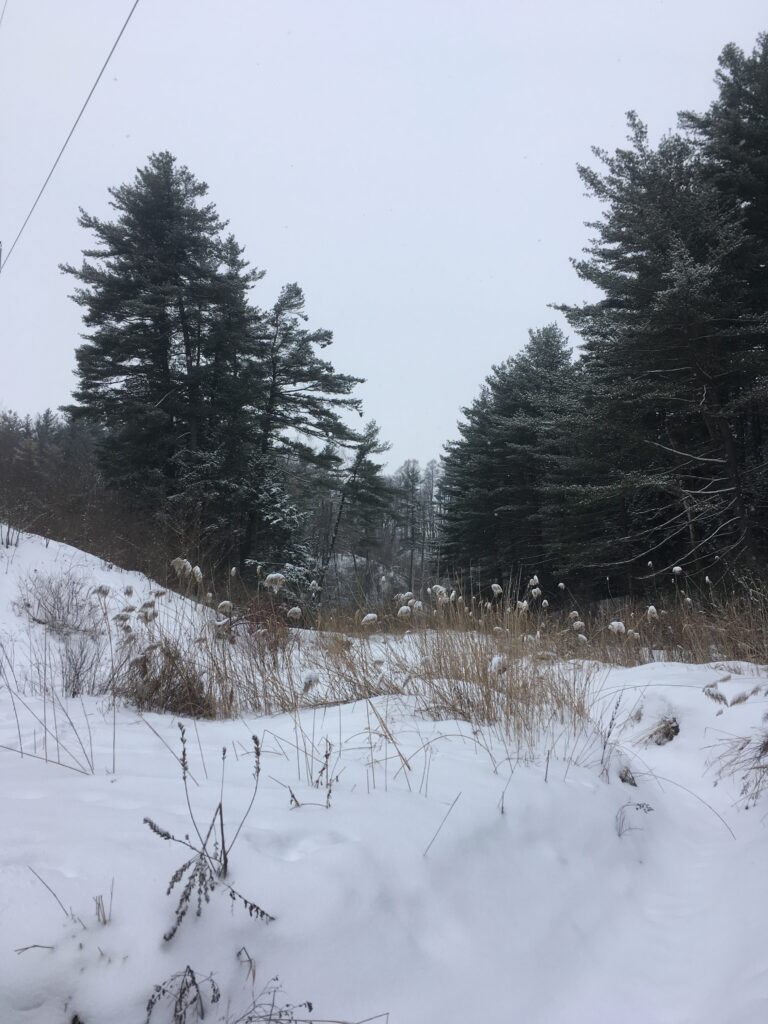
Where there was once running water there is now just a slightly lower layer of thick snow. Without the bridge the brook would be practically unidentifiable. There is also even less plant life than I had last seen. The contrast between the forest edge and my site’s clearing is starker than ever.
Looking for signs of wildlife was tricky. Fresh snow has been falling all morning, covering up whatever evidence was already there. However, I did follow a few tracks I was able to find.
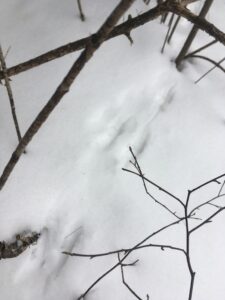
The first, pictured above, I believe was a cottontail rabbit because the stride was quite long and the hind feet were very large in proportion to the front. These tracks led into the underbrush where I couldn’t follow to see any destination.
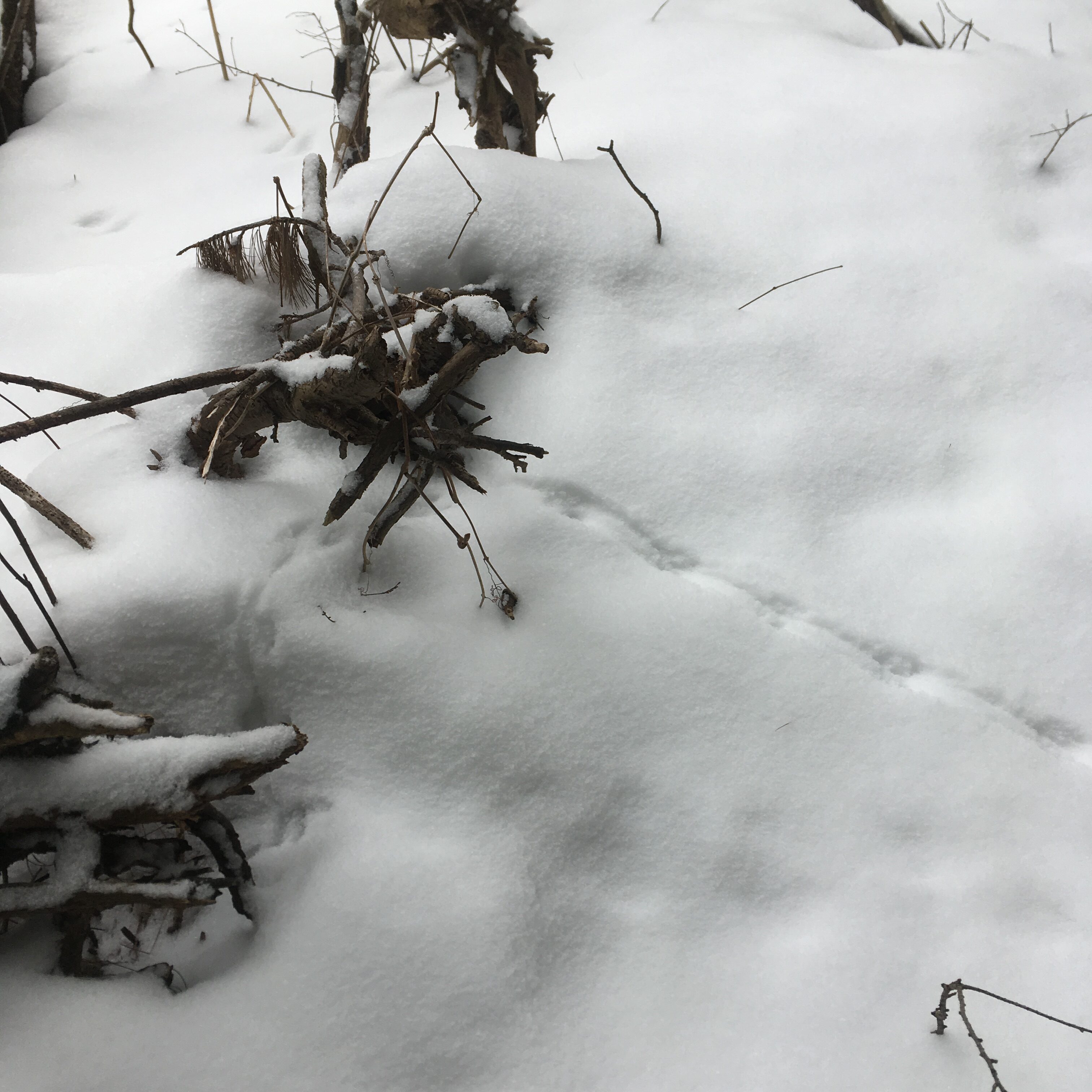
The second tracks were much smaller, and pretty faint. I think they belonged to a white-footed mouse since they’re also in a galloping pattern, and showed him scampering towards warmth beneath a log.

The last tracks that I saw a ton of (above) gave themselves away with their sporadic behavior and impractical energy use as unfortunately not a fox or coyote, but my little tracking companion Willow (below).
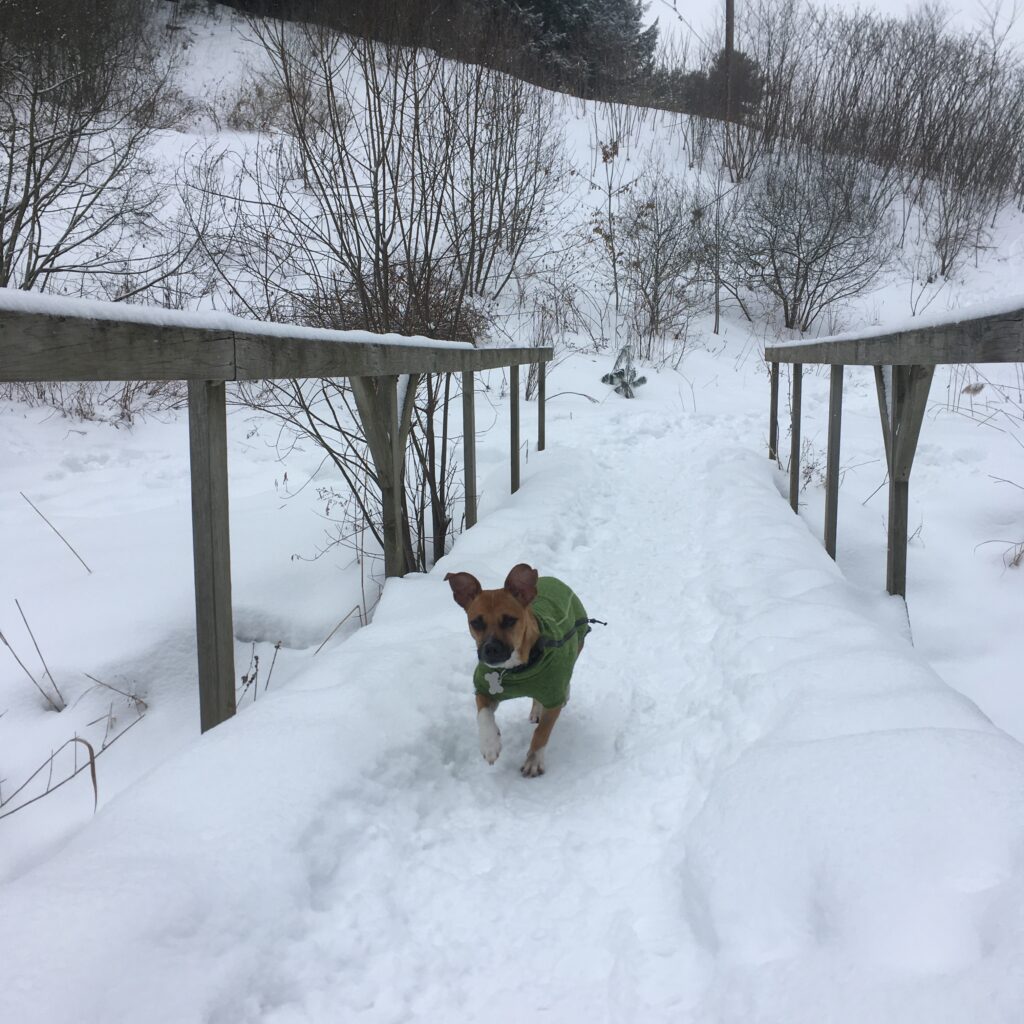
Identifying all of the deciduous trees on my site was a little difficult since many species within the clearing I’m not very familiar with, and then the forested section is mostly coniferous. The deciduous trees I could see and identify were white and red oak, striped maple and American beech.
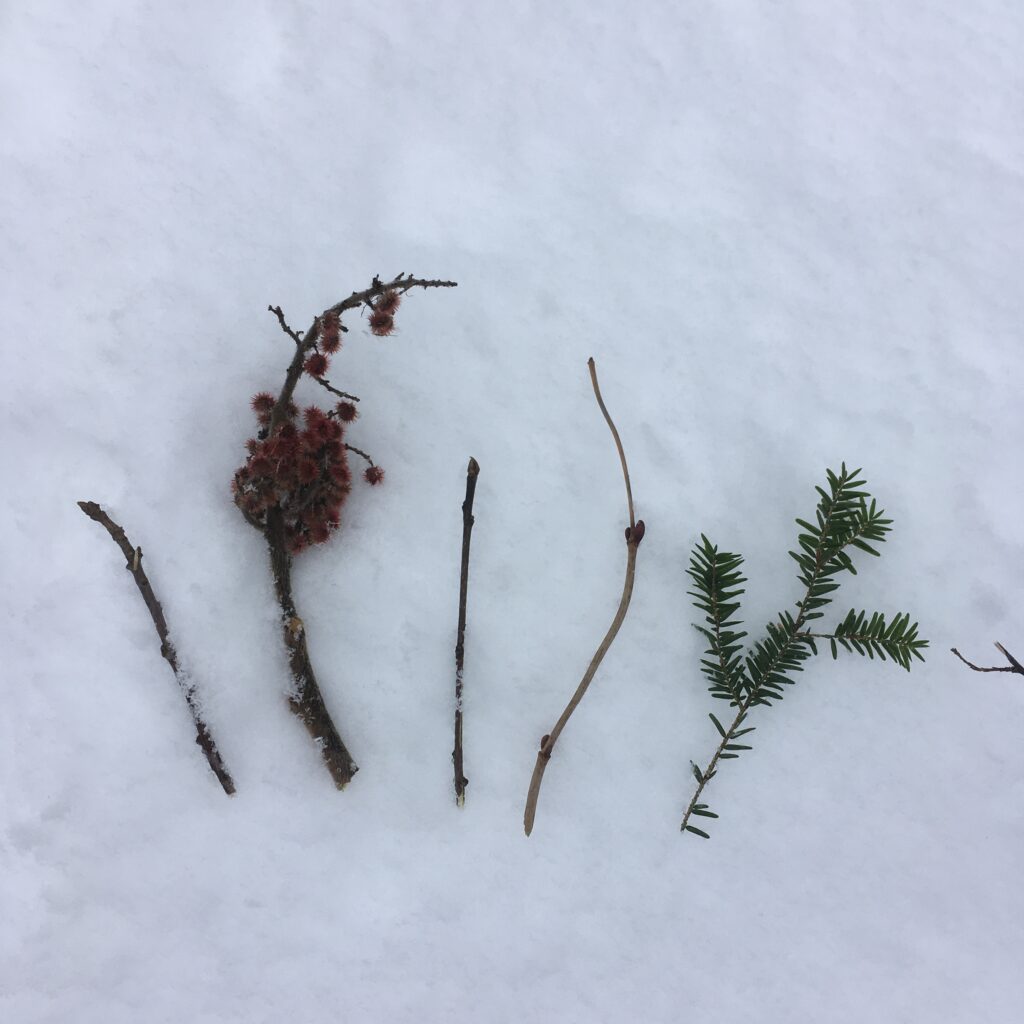
Above is a photo of some twig samples I took from some of the dominant species I saw in and around my site. I tried my best to identify them there and at home, and from left to right I believe they are red oak (Quercus rubra), staghorn sumac (Rhus hirta), glossy buckthorn (Frangula alnus), American basswood (Tilia americana), and eastern hemlock (Tsuga canadensis).
Below is a sketch I did of the staghorn sumac, definitely one of my favorite species in my phenology site.

